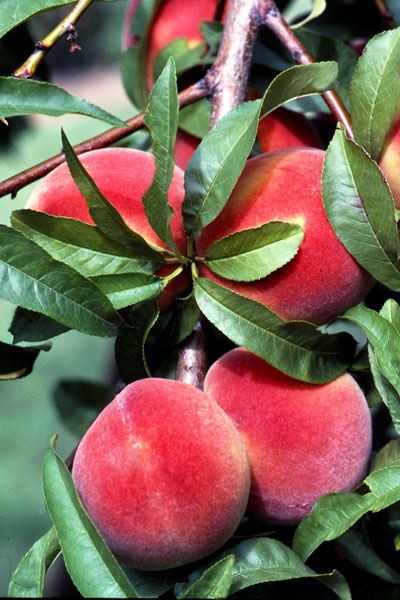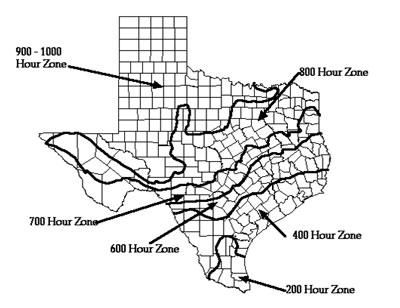Chilling Requirements of Fruit Trees
You may be more familiar with the phrase “chilling hours.” That’s the way I was first taught about this subject, and the professor who was talking about it referenced the number of cumulative hours a plant received between 32 and 45 degrees in any given winter. For the most part, the farther north you would go, the greater the number of hours you might expect to pile up.

It’s critical that you choose a peach variety matching the chilling hours in your region.
This all has to do with when a particular variety of fruit will decide that it’s had enough winter weather and come into bloom. For what is called “low-chilling” varieties, especially peaches, that could happen by the middle or end of January. That means that you shouldn’t grow those in North Texas where killing freezes are likely to happen into early March. But those varieties would be ideal in Deep South Texas. By comparison, high-chilling types won’t get enough cold in South Texas to flower and produce fruit normally. You just have to match all this up if you expect to succeed.
Here is a map provided by the Texas AgriLife Extension of Texas A&M showing the general chilling hours across Texas. Mind you, this will vary from year to year, but it gives you an idea of the average hours for your county. As you buy your fruit crops, most notably stone fruit, match them up carefully to be sure you’re buying types suited to your area.

Click here to view online.
In example, want to see the peach varieties Texas A&M recommends for your number of chilling hours? Here is their fact sheet covering peaches. Scroll down to the list beginning on page 3.
If you still want more…
In reading various university accounts on the topic, I find that I may be simplifying it too much. For example, some researchers give less value to temperatures nearer to freezing, and they take away chilling hours if temperatures climb above 65 degrees during winter warm spells. I’ll let you click through to some sample links if you care to do so. Happy reading!
Texas A&M: https://aggie-horticulture.tamu.edu/stonefruit/chillacc.html
University of Arkansas: https://www.uaex.edu/farm-ranch/crops-commercial-horticulture/horticulture/horticulture-temperatures.aspx
University of California (not that much of it would apply to Texas): http://ccag-eh.ucanr.edu/Chill_Portions_and_the_Dynamic_Model/
Data from TAMU Overton TX (some interesting data here): https://etweather.tamu.edu/chill/
